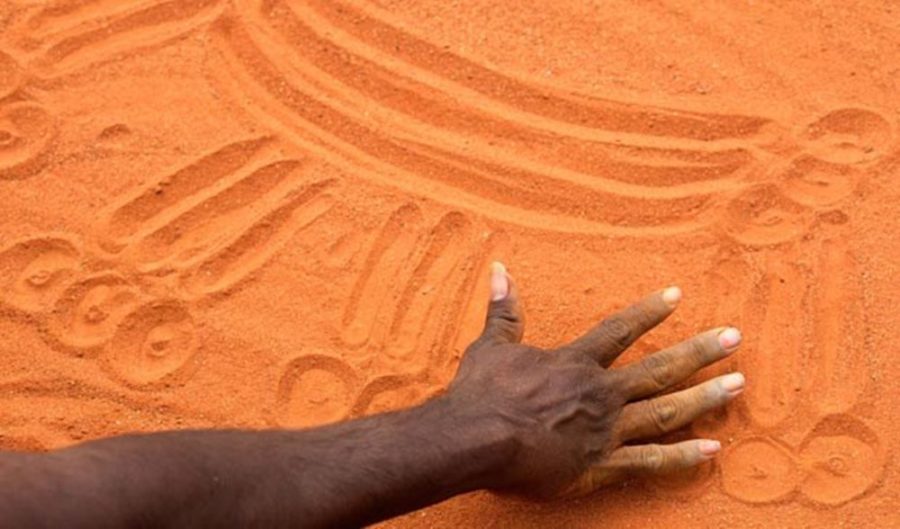Bringing back Aboriginal languages

NAIDOC Week is a time to celebrate the history and culture of Aboriginal and Torres Strait Islander people. This year celebrations will focus on Indigenous languages, their importance and their resilience.
Hundreds of languages were once spoken in Australia. Many have slipped from use, but NAIDOC celebrations are determined to awake sleeping tongues across the nation.
In 2013, Amanda Burdon spoke with the linguists, missionary groups and community members who are reviving the languages in their respective communities, while David Hancock photographed the initiatives.
Sand drawing is an elaborate form of verbal art in indigenous culture that might incorporate narration, song, signs, gesture and drawing. “We always sit around and tell little ones stories like this in the sand,” says April Pengart Campbell. “We use leaves to represent people, and sticks and rocks and sometimes small animals like witchety grubs. We show the kids how to do body painting and signs connected to our country. My mother and grandfather taught me how to tell stories like this when I was only two or three.”

Indigenous communication is much more than simply speech. Indigenous people commonly use sign during restricted ceremonies and mourning, but also when hunting, to provide directions or to communicate with someone a distance away. “We use signs when someone is bereaved,” says April. “Somebody who has lost a child, or a woman who has lost her husband is not allowed to speak and signs sometimes for weeks or months.”

Efforts to revive and strengthen Indigenous language in central Australia involve linguists, missionary groups and Aboriginal women. Alice Springs author, educator and senior Arrernte woman Veronica Perrurle Dobson is a proud keeper of her traditional language. When she’s not teaching online or writing books, Veronica shares her knowledge of bush medicine, traditional healing and the myriad plants found within the Alice Springs Desert Park. She believes that the rich knowledge contained within Indigenous languages has the potential to generate social and economic opportunities for her people and to inform future land management.

In a bid to maintain and revive the Wirangu and Gugada languages of western SA, community language workers learn and record information from elders and educate younger people on how these endangered languages can be applied in everyday situations.

Jenny Green (second from right) with Eileen Campbell, Clarrie Long and April Campbell. Indigenous languages are a storehouse of knowledge about the Australian continent and how it has changed over time. Indigenous words are often very precise, for example, Arrernte people have a name for each stage in a witchety grub’s life cycle, and the Pintupi language –a Western Desert variety – has 18 words for “hole.”

Increasingly, community language projects are recognising and rewarding language speakers as important cultural custodians. The release of the new Warlpiri picture dictionary created a great deal of interest on the Hanson riverbed when Anmatyerre and Warlpiri speakers gathered for a recording session of songs, stories, signs and sand drawings.

